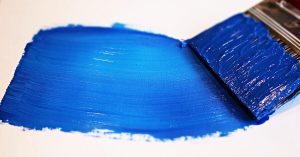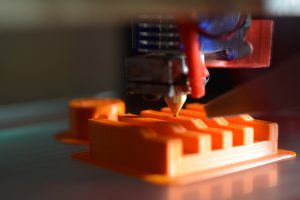
How To Formulate Leed Compliant Reflective Roof Coatings?
Share on facebook Share on linkedin Share on whatsapp Share on telegram Share on email Reflective roof coatings are known for their viable role in the LEED rating process. Numerous

High moisture content in substrate is the second biggest problem in conventional solvent free epoxy flooring application. Unexperienced applicator or coating manufacturer tends to take the project without checking how severe is the moisture condition in substrate. On certain worst case, it can lead to a problematic repair and claim, which at the end consume all the project margin.

Figure 1. Causes of coating failure (Source)
If only the applicator or manufacturer prior application already know the moisture content in substrate in this particular concrete, then the correct system can be applied. It can also lead to a purchase of another high performance suitable flooring system or complimentary moisture barrier membrane, instead of conventional epoxy flooring which increase the flooring lifetime.
1. Bubbling
Moisture can cause bubbles to form in epoxy before it has cured. This happens when moisture rising to the surface meets the liquid epoxy. It cannot fully escape and creates bubbles at the surface as it rises. The phenomenon is different from osmotic blistering.

2. Peeling or Flaking Epoxy
When moisture is present underneath cured epoxy, it can interfere with the bond between the epoxy and the concrete. When the moisture rises it cannot pass through the surface of the epoxy. When trapped, it puts pressure on the epoxy and causes it to lift or peel from the concrete floor.

In situ and Hood Relative Humidity tests as per BS 8201, 8203, 5325 and ASTM F2170, is the most common test conducted to test moisture. ASTM F2420 is used to be conducted to test moisture however ASTM board withdrawn the standard with no replacement due to precision and biased result.
The latest and the most convenience to test moisture is ASTM F2659-10.
Tramex has been manufacturing Moisture Meters for the Industrial Flooring industry for more than 30 years. They supply individual moisture meters, both non-destructive and with probe attachments, as well as complete kits. These instruments and kits are an essential part of an Industrial Flooring Contractor’s toolbox. In fact the in situ and Hood Relative Humidity tests as per BS 8201, 8203, 5325 and ASTM F2170, F2420 can be conducted with the Tramex CMEX II and reusable Hygro-i ® probe.
One of the most favorite choice is Tramex CME 4 to test moisture. Instant and non-destructive tests per international standard ASTM F2659 with the Tramex CME4, a handheld electronic instrument used for testing moisture content in concrete slabs and other floor screeds, featuring Carbide Method equivalent scales for concrete and anhydrite screeds. Precise and easy to use, the CME4 allows the user to make multiple tests over a large area in the shortest possible time.

Figure 4. Tramex CME 4 left, Tramex CMEX II Right (Source)

Figure 5. How to use Tramex CME 4 (Source)
The instrument operates on the principle that the electrical impedance of a material varies in proportion to its moisture content. The electrical impedance is measured by creating a low frequency alternating electric field between the electrodes as illustrated in the diagram below.


Figure 6. How Tramex CME 4 Works
If you want to find more information about the solution, please contact us via email.
Tramex warrants that this instrument will be free from defects and faulty workmanship for a period of one year from date of first purchase. If a fault develops during the warranty period, Tramex, at its option, will, at its absolute discretion, either repair the defective product without charge for the parts and labour, or will provide a replacement in exchange for the defective product returned to Tramex Ltd. This warranty shall not apply to any defect, failure or damage causedby improper use or improper or inadequate maintenance and care. In no event shall Tramex, its agents or distributors be liable to the customer or any other person, company or organisation for any special, indirect, or consequential loss or damage of any type whatsoever (including, without limitation, loss of business, revenue, profits, data, savings or good will), whether occasioned by the act, breach, omission, default, or negligence of Tramex Ltd., whether or not foreseeable, arising howsoever out of or in connection with the sale of this product including arising out of breach of contract, tort, misrepresentation or arising from statute or indemnity. Without prejudice to the above, all other warranties, representations and conditions whether made orally or implied by circumstances, custom, contract, equity, statute or common law are hereby excluded, including all terms implied by Section 13, 14 and 15 of the Sale of Goods Act 1893.
Warranty Claims: A defective product should be returned shipping pre paid, with full description of defect to your supplier or Tramex at address shown on back page of this booklet.
For regular on-site assessment of your Concrete Encounter CME 4, a calibration check-plate is available from Tramex. Should it be found that readings are outside the set tolerances, it is recommended that the Concrete Encounter CME 4 be returned for re-calibration. Calibration adjustments should not be carried out by anyone other than Tramex or their authorised service provider who will issue a calibration certificate on completion.

Share on facebook Share on linkedin Share on whatsapp Share on telegram Share on email Reflective roof coatings are known for their viable role in the LEED rating process. Numerous

Gloss is an important aspect to consider for your products due to the possible psychological effect of different gloss levels. How do you determine the appropriate gloss measurement angle for desired gloss on your gloss meter?

What is 3D printing work? How is it different from other manufacturing techniques? The answers to these questions might surprise you. There at several different types, there isn’t just one form of 3D printing. They all build parts by depositing material one layer at a time, but there are important differences in terms of 3D printing technologies, the materials supported, the part sizes that can be produced, and the accuracy, resolution and precision that the 3D printers can achieve.
Copyright © 2023 Maha Chemicals (Asia) Pte Ltd